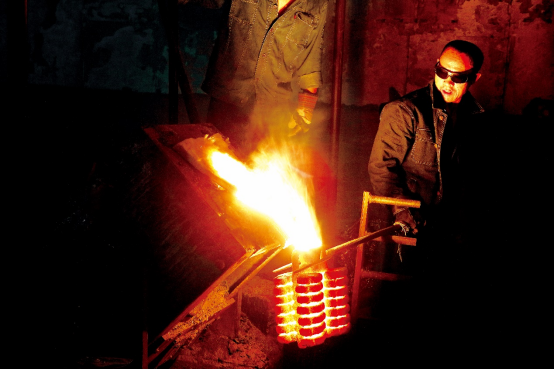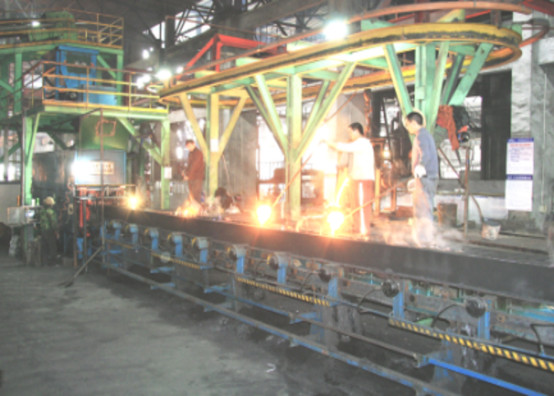











Learn how our manufacturing processes allow us to deliver various products for our customers.
Learn how our manufacturing processes allow us to deliver various products for our customers.
Learn how our manufacturing processes allow us to deliver various products for our customers.
We work with world-class brands in a variety of industries to bring their visions to life through style, performance and protection.
COMPANY

2022-06-07
Investment Casting and Sand Casting are two different methods of metal casting, both of which involve pouring liquid metal into a mold to produce a metal part. Investment Casting and Sand Casting have their individual characteristics and advantages, so you can not simply say which one is better, but which one is more suitable for your products.
Investment Casting:

Investment Casting, also known as precision casting or lost-wax casting, is a casting process to make components in metal cast alloy. Firstly, we have to make aluminum mold to produce the wax pattern. Wax pattern is made in the exact shape of the item to be cast. This pattern will be coated with a refractory ceramic material to get a ceramic shell. When the shell is hard enough, we will remove the wax pattern inside from the shell. Then pour the molten metal into the shell, allowing it to solidify. Final investment casting parts will have a smooth surface and the same shape as the wax pattern. Besides, the removed wax can be reused next time.
Investment Casting has following advantages:
1.Investment casting can produce parts with complex shapes with very thin walls.
2.Investment castings can achieve high dimensional tolerance request.
3.Smooth surface finish can save further machining or surface finish pocess.
4.Material of investment casting can be Ferrous, nonferrous or duplex alloys. Investment casting can be quite economical by repeat runs.
Sand Casting:

Sand Casting involves the pouring of molten metal into a cavity-shaped sand mold where it solidifies. The mold is made of sand particles held together with an inorganic binding agent. After the metal has cooled to room temperature, the sand mold is broken open to remove the casting. Besides, the sand can be reused.
Sand Casting has following advantages:
1.The cost of sand casting is lower especially in shorter runs.
2.Sand casting can produce larger castings.
3.Ferrous and nonferrous metals can be also used.
4.Tooling cost is lower.
Differences between Investment Casting and Sand Casting:
1.Design: In investment castings, ceramic shell is formed from liquid slurry, so the castings can be designed into almost any shape, and engineers have freedom to add the intricate structures and complex shapes. In sand casting, the product is often designed to be tapered, so the casting parts can be taken out from the sand mold easily with less friction. It is also a challenge for the sand casting to make parts with internal voids or cavities. Sometimes, several cores may be needed. So sand casting design is limited by sand casting technology.
2.Materials in casting process: the investment casting raw material was to join the polyethylene material of paraffin wax, sodium silicate, silicon sol, whose costs are expensive. Sand casting raw materials are clay sand or chemical self-hardening sand, the resources of the casting sand is rich and the price is cheap.
3.Time of casting process: The investment casting mold process needs longer period. The molding cycle of sand casting is short and has high efficiency.
4.Surface finish quality: The difference of the surface finish quality between investment casting and sand casting is very big. Because of the material of the ceramic shell, the surface of the investment casting parts is smooth. After removing the shell and blasting, the castings can be used directly. In sand casting, the mold has to be split apart to release the castings, so the parting line is more obvious. And because the sand is rough, the surface is also relatively rough and requires additional time and cost to process.
5.Dimension tolerance: Investment castings have very high dimension tolerance, normally could reach CT 4 – CT6. Sand Castings have lower dimension tolerance, size accuracy for CT 10 – CT 13. The wall thickness of sand castings is minimum 3 – 5mm.
6.Cost: Comprehensively speaking, investment casting method is usually superior to other casting methods, especially in product details and surface finish. But due to the complexity and preparation process of the investment casting process makes it cost much more expensive than sand casting.
So customers can choose the corresponding process according to their different needs, or consult us and we will determine the corresponding production process according to customer requirements.